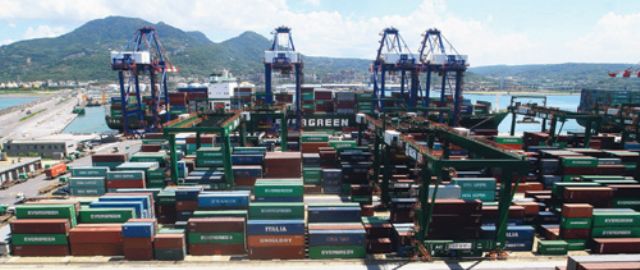Taiwan's Export Orders in Jan. Up 8% YoY to New High of Over US$39 Bn.
2015/03/09 | By Steve Chuang
Seemingly immune to seasonal factors, Taiwan's export orders in January grew 8 percent year on year (YoY) to US$39.04 billion, the highest January record in history, according to the latest statistics compiled by Ministry of Economic Affairs (MOEA).
Additional good news for Taiwan's export-driven economy is that monthly export orders have continuously shown stable yearly growth for 12 months in a row.
Separately, export orders received by Taiwan's industries of ICT (information and communication technology) devices, electronics and machinery in January grew 19.7 percent, 14.1 percent and 16.1 percent respectively, over last January, hence offsetting widespread declines in the other sectors, to which MOEA officials attribute strong shipments of iPhone 6 and other new smartphone models.
Fueled by the abovementioned factors, ICT and electronics sectors received US$11.14 billion and US$10.14 billion of export orders respectively, throughout the month, both record highs for January in history. Also notable is that export orders for semiconductor manufacturing, testing and packaging, DRAM and other electronic parts and components as whole have shown positive growths for 20 successive months.
Meanwhile, orders to Taiwanese machinery suppliers amounted to US$1.84 billion in January, hence retaining its steady uptrend for the 12th straight month. Factors behind the encouraging result include strong demand for automation equipment in China, steady economic recovery in the U.S. and a new round of production expansion by Taiwanese makers overseas. Worth mentioning is that of the sector's total January export orders, those from China (including Hong Kong) increased around US$100 million compared to last January.
Contrasting the sectors mentioned above, the base metal, plastic and rubber, and chemical industries witnessed a 4.6 percent, 4.3 percent and 11.9 percent drop, respectively, in export orders landed in January, all due to weak market demand.
Steadily declining export orders from Japan has also set off alarm for Taiwan. Compared to orders from other regional markets, including the U.S., China, Europe and ASEAN (Association of Southeast Asian Nations) bloc, all seeing positive growths, those from Japan in January, however, dropped to US$2.47 billion, a nadir since May 2009, to represent a continuous downturn for the fifth straight month, shows MOEA's report.
MOEA attributes continuously declining orders from Japan mainly to growing rivalry from South Korean and Chinese competitors against Japanese suppliers in the global market for consumer electronics, such as laptops, PCs and TVs, which has forced some Japanese firms to either downsize operation or withdraw from the competition, hence reducing demand for outsourcing with Taiwanese exporters. For example, Sony just announced plans to sell off its Vaio computer business division in early February, to impact Taiwan's laptop ODM (original design manufacturing) industry in the short term.
Another decisive reason, market observers point out, is the moderate drop of the New Taiwan dollar-to-greenback exchange rate, compared to the plunging Japanese yen-to-greenback exchange rate, which has motivated Japanese firms to shift orders from Taiwanese exporters to domestic suppliers.
As a result, Taiwan's export orders from Japan in January showed a double-digit drop, compared to both a month and a year ago, to hit a 5-year low in terms of value, with those for ICT products and electronics even plummeting over 30 percent YoY, as reported by MOEA.
On export orders in February, MOEA comments that orders are very likely to keep growing year on year for a couple of reasons, including added work shifts by local machine-tool and semiconductor makers during the weeklong Chinese New Year vacation to fill rush orders and a comparatively low base last February, when orders from the U.S. dropped due to interrupted local economy that was hit by severe snowstorms.
(SC)




